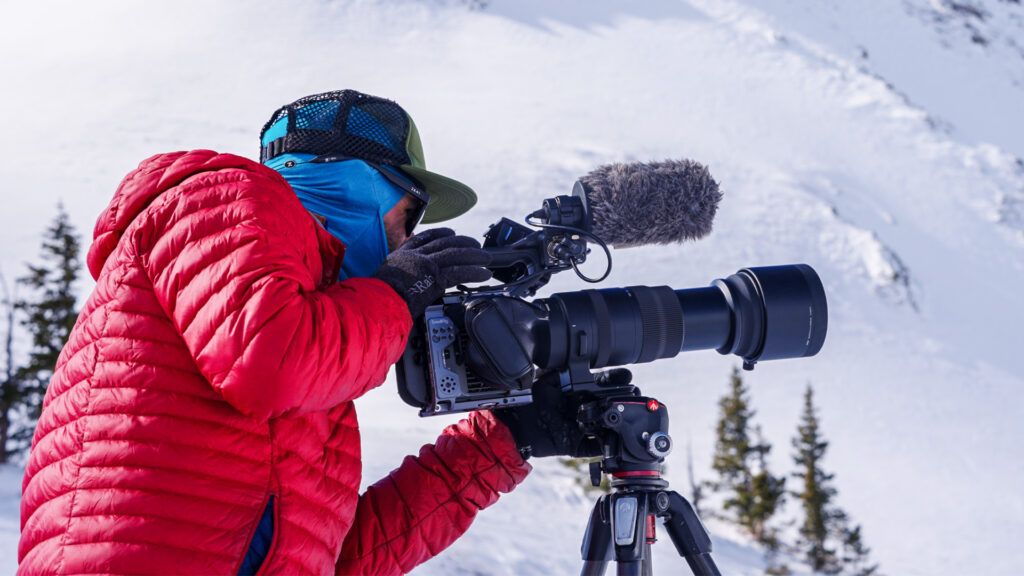I’ve been on an extended test-drive with the Sigma 150-500mm F5-6.3 this year, paired with my trusty Nikon D7100. The great thing about this match is since the D7100 has a cropped sensor with a 1.5x factor, the 500mm reach effectively becomes 750mm. Using the in-camera 1.3 crop for added photo burst rate I end up with nearly 900mm of reach at the long end! That really comes in handy with wildlife photography. I have had a ton of fun with the lens and have to say I will have a very hard time ever giving it back. Besides being light enough to carry all day, the lens performs extremely well for wildlife, action sports, and big-orb sunsets, both on land, and on board boats in the waters off Long Island. And more recently, it’s been my go-to lens for New York whale watching.
Having now made several whale watching voyages, I have had had no problem getting sharp shots from a moving boat. The harder part was getting the whales to cooperate by doing anything other than slowly swimming and surfacing briefly! This all changed when my friend Artie Raslich recently invited me on his 26 foot boat named Ship of Fools to follow a pod of whales that had been feeding actively close to shore within sight of New York City off Long Beach and East Rockaway New York. After passing through Deb’s inlet and breaking through a fog bank we found our first whale that we ended up following for several hours. One of my first shots was a fairly young Humpback gliding out of the fog. Artie knows his Whales and quickly identified this one as NYC0015. Apparently this one and his Mother have been in the area all year feeding on the abundant bunker in the area.
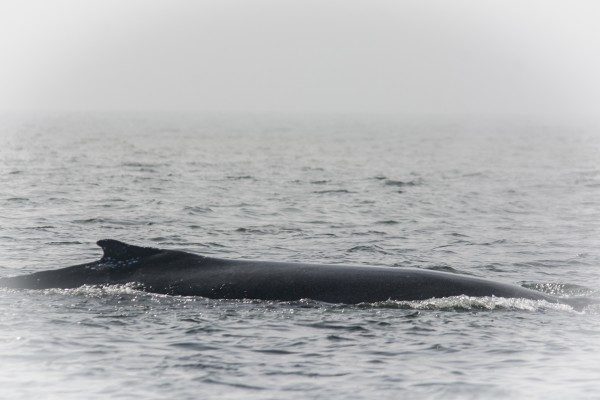
The bright sun burning through the fog was a little challenging initially but the whale cooperated by lunging through the air, gobbling up what looked like hundreds of bunker at a time. The whale was close for this shot, so the lens was pulled back to 150mm 1/1600 F5. I set my autofocus to continuous single point. Without the zoom versatility of this lens, I would have been very over-lensed for this breach!
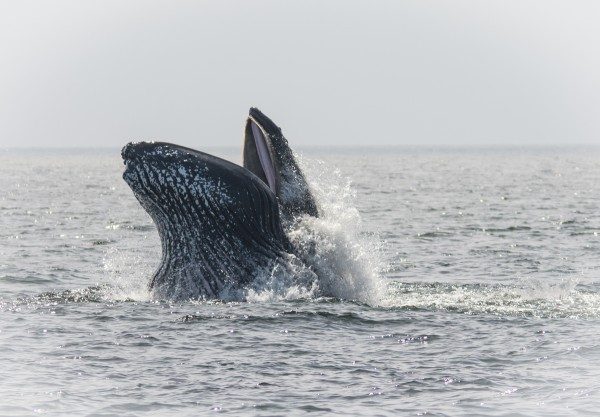
As the day progressed, the light got better and the whale continued to fill his belly. He was not concerned with our presence and shocked us by swimming right at us and diving at the last second. He was too close to even photograph at that point.! We also had some close calls with the water vapor from his blow hole. Artie tells me if it gets on the lens you are done shooting for the day. I can also tell you it is a smell you won’t soon forget, and not in a good way. The shots below were shot at 220mm 1/1600 F5 and ISO 220.
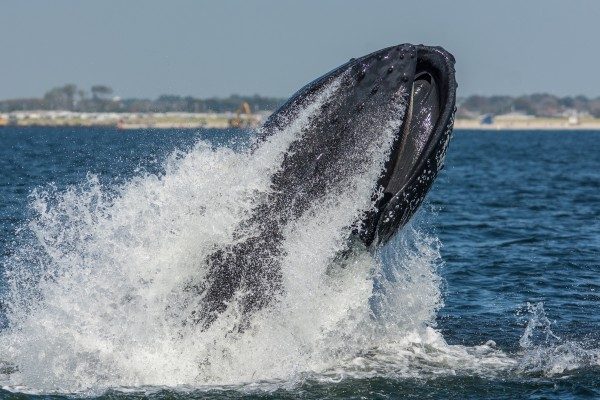
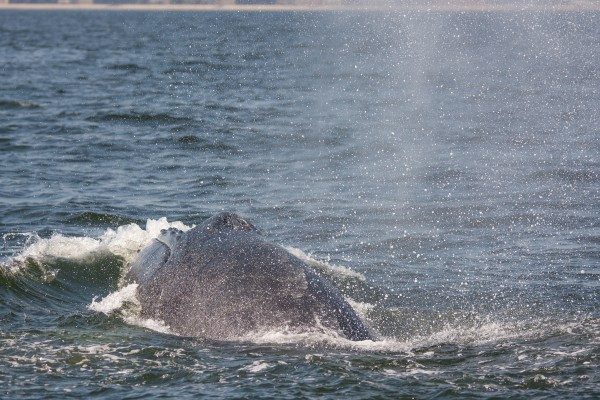
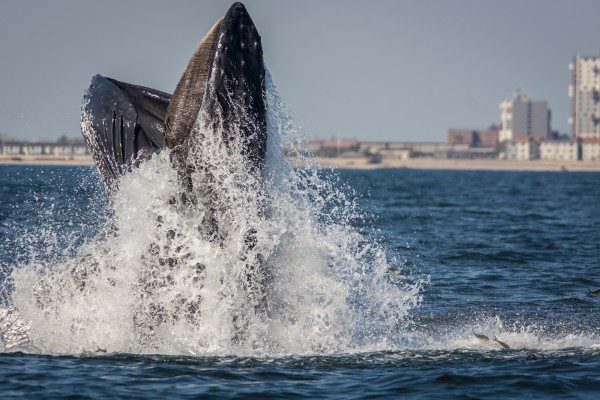
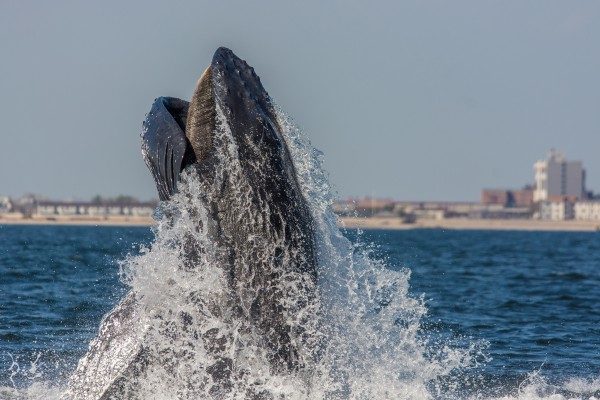
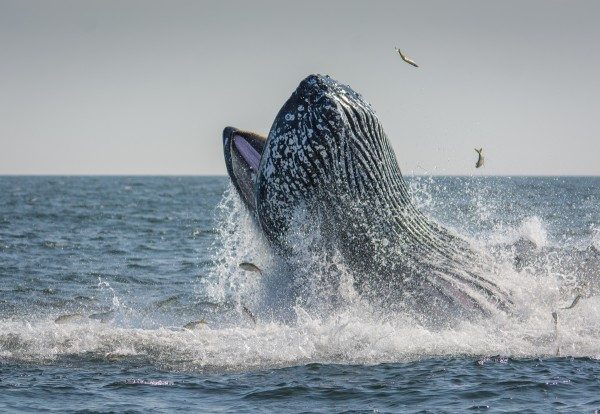
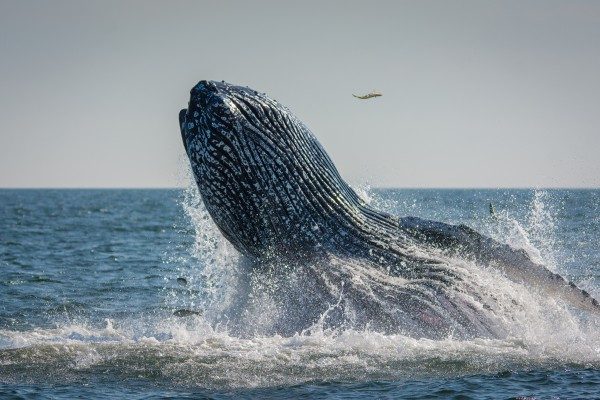
Getting back to the lens, I am thrilled with the focusing system. The whales lunge suddenly and are only out of the water for a couple of seconds. This is where a sharp lens with a fast, accurate focus is critical. Using back button focus, I just focused on the center of the action and squeezed off 9 shots over 2 seconds. Every shot in the series is perfectly focused. Most DSLRs can be switched to back-button focus, which disentangles autofocus from the shutter button, allowing for pre-focusing, or manual focus override with no shutter-button lag when the action happens—check your manual for exact instructions and operations to try this customization.
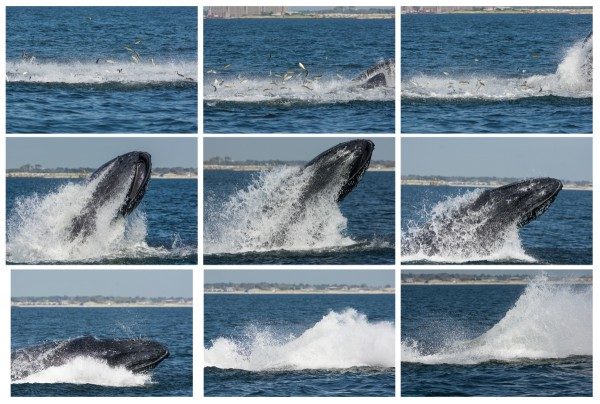
Below is another sequence, a little slower on the trigger. 4 shots over 1 second at 1/1600 F5 ISO 140 150mm
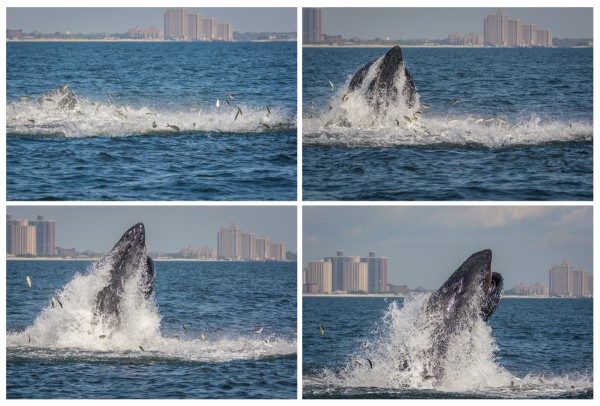
In summary, I couldn’t be more pleased with the performance of the Sigma 150-500 in the waters off New York City. You have a lens small enough to fit in most camera bags, with incredible reach and range for making incredible images of these majestic sea creatures.
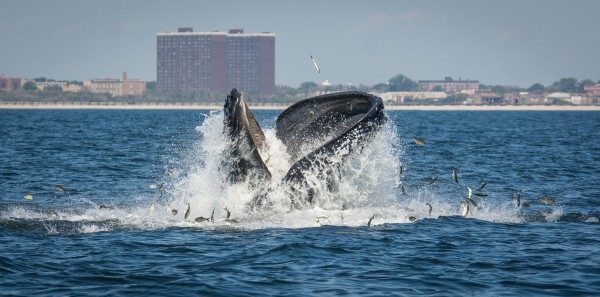
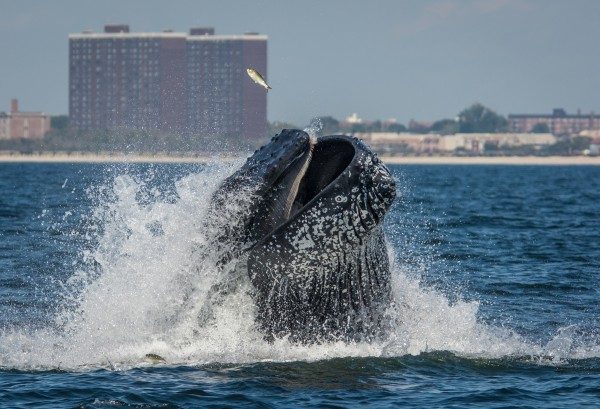
Tips for Whale Watching off New York City and beyond
- Learn and understand back button focus. It is a game changer, particularly with wildlife and moving objects.
- Combining back-button focus and shutter-priority capture offers the quickest shutter response.
- Burst mode means keepers. Using back button focus lock on target and hold down shutter in burst mode. You may have some out of focus but the odds of a sharp keeper go way up.
- Wider apertures mean higher shutter speeds to freeze the action. If your shutter speed is too slow, you make introduce boat motion and subject-movement blur into the images.
- Higher ISOs allow for faster shutter speeds, too, but be mindful of noise.
- Stay in shape. A steady hand is key. The 150-500 is light and small compared to other big zoom lenses but if you can’t keep it steady you will not get a sharp shot.
- Finding an experienced charter guide, or a tour boat specializing in whales will help bring you to where the whales are active.

